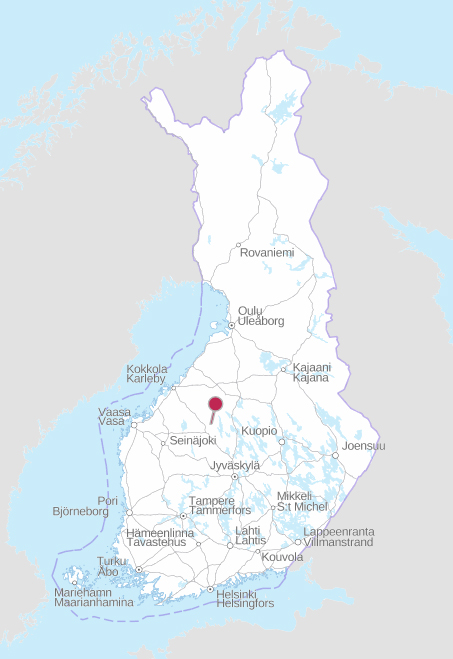Biodiversity & Climate offsets of the ECCB2018 congress
As human beings we cause harmful ecological impacts such as habitat destruction and greenhouse gas (GHG) emissions. Biodiversity and climate offsetting are approaches where harmful ecological and climate impacts are compensated by producing some additional benefits for nature or sequestration of carbon that would not have be achieved without the offsetting. Biodiversity and climate offsets are rather commonly used around the world. In this project we aim to offset the harmful ecological and climate impacts of the European Congress for Conservation Biology, ECCB2018, and through a case-study gain new information about the magnitude of harm caused by a large international conference, and about the benefits gained through raising funds from the participants to be used for offsetting.
Ecological harm and GHG emissions caused by ECCB2018
When estimating the harmful ecological and climate impacts of any activity, the focus needs to be on the impacts that would not have taken place without the activity. As an example, we may assume that congress delegates would consume more or less the same amount of food whether they attend the congress of not, but they would not have flown to Finland without the congress. Thus, food consumption during the conference is not likely to cause additional environmental harm (in particular as we are serving mostly local products, fresh water fish and no meat during the conference) but the travelling is. To estimate the emissions caused by your travel, we request an estimate about the vehicles used and the distance travelled with each vehicle when you register to the conference.
Ecological benefits and GHG sequestration gain of the ECCB2018 offsets
To offset the ecological harm and emissions caused by the ECCB2018, the delegates to the conference are requested to pay an offset fee during the registration. Offsetting is strongly recommended but voluntary and each delegate can decide the amount they are willing to pay. The average cost of restoring drained peatlands (see below) vary from 250 to 750 EUR per hectare and the area to be restored depends on the amount of offset fees collected during the registration. All funds raised for the offsetting purposes will be allocated in full to restoration to create the offsets.
To offset the harm caused by the conference, we will restore drained peatlands in collaboration with Parks and Wildlife Finland, a State Enterprise managing all state owned lands in Finland. Over half of of the original 10.4 Mha of peatlands in Finland have been drained for forestry. Drainage is degrading the ecological condition of the peatland and causing the natural C sink of the peatland to decrease or even turn into negative i.e. C source. By restoring the peatland by filling in the ditches, the hydrology of the peatland recovers rapidly inducing a slower recovery of the biological community of the peatland. It is also expected that the carbon sequestration function of the peatland will recover. During this project we will estimate the ecological benefits and the amount of carbon sequestration that will be gained due to restoration based on field studies on site and on literature respectively.
Of the drained peatlands, on about 1 Mha the drainage has failed and the peatland has remained too wet to be profitable from the perspective of continued forestry investment. These peatlands have small opportunity costs and are thus ideal for restoration purposes. Their restoration is not a National priority and without the voluntary offsetting projects they would not be restored. Even if the ditches will, to some extent, grow over due to natural succession, drying has caused subsidence of the peat close to the ditches, and therefore significant natural recovery of the hydrological aspects vital to the ecosystem condition is unlikely. Therefore, the conditions of offsets, i.e. additionality of the benefit and no leakage of the harmful impacts due to setting aside the area for offsets, are met. The ultimate aim of this project is to verify whether the offsets are adequate to completely offset the losses, whether the offset is only partial, or whether the ECCB2018 can reach a net positive impact.
One of the restoration sites for the ECCB2018 offsets is a drained open mire where the drainage has failed. The mire is well connected to existing natural peatland areas being located very close to Salamanperä Strict Nature Reserve (http://www.metsa.fi/web/en/strict-nature-reserves) and Salamajärvi National Park (http://www.nationalparks.fi/en/salamajarvinp). 
You can follow how the offsetting project is advancing in Instagram.
 What is boreal peatland restoration?
What is boreal peatland restoration?








